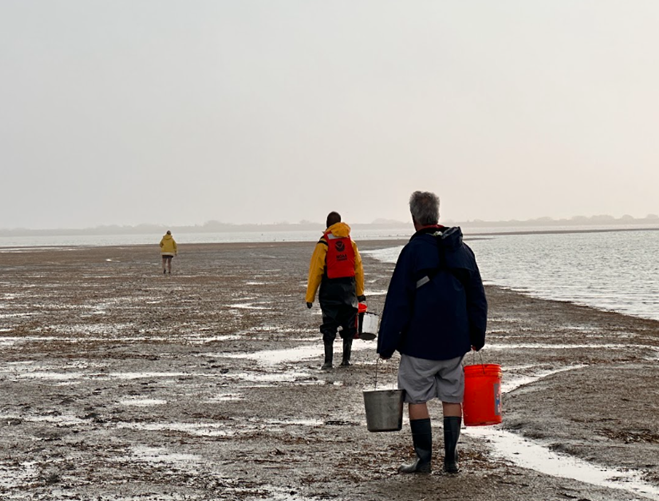
NOAA’s Mussel Watch Program conducted a contamination survey of the Gulf of Mexico this winter that included new chemical pollutants and new sampling sites. The expanded monitoring aims to fill critical data gaps for regional natural resource managers striving to make informed decisions about land-based sources of pollution.
Shellfish and sediment samples collected for the assessment will be analyzed for a suite of chemical pollutants, including contaminants of emerging concern, such as pharmaceuticals, flame retardants, and personal care products. Also, for the first time, the team’s analysis will include chlorinated paraffins found in a variety of industrial products, like paints, sealants, and adhesives.
Bivalve shellfish, such as mussels and oysters, can serve as ideal indicators of chemical pollution. They tend to bioaccumulate pollutants from the large amounts of water they filter, they have limited mobility, and they are found throughout the U.S. coastal zone.
The Gulf of Mexico assessment used Eastern oysters (Crassostrea virginica) collected from 67 of the program’s historic monitoring sites and 35 new sites. The Mussel Watch team is now on the U.S. West Coast, where they will conduct a similar assessment for Alaska, Washington, Oregon, California, and Hawaii. This regional survey encompasses 81 historic sites and five news sites and will collect and analyze blue mussels (Mytilus sp.) along the West Coast and Hawaiian oysters (Ostrea sandvicensis) in Hawaii. Results from both regional assessments will be available on NCCOS’s Coastal Pollution Data Explorer.
To complete the regional surveys, the researchers leveraged new and existing partnerships. In the Gulf, the team worked with the Gulf of Mexico Alliance, NOAA’s National Marine Fisheries Service, and the National Estuarine Research Reserves. On the West Coast, the team engaged the Southern California Coastal Water Research Project, the Oregon Department of Fish and Wildlife, the Washington Department of Fish and Wildlife, the Alaska Department of Environmental Conservation, the National Park Service, and the University of Hawaii.
Since 1986, at nearly 300 sites nationwide, the Mussel Watch Program has monitored coastal waters for chemical contaminants and biological indicators of water quality. Mussel Watch remains the longest running continuous contaminant-monitoring program of its kind in the United States.
